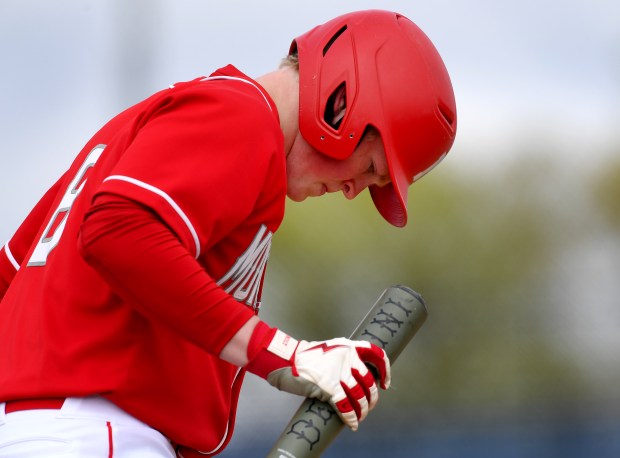Though each annual Illinois Spring Bird Count — held the first Saturday in May — has its surprises, the latest one, at least in my participation area, was particularly unusual.
A bird species that spends winter in Central or South America, and doesn’t pass through northern Illinois until late May or early June, was perched on a dead snag at Ryerson Woods on May 4, the day of the count. It flew out to catch a flying insect, then returned to its original landing spot
We never expected to get this species on a Spring Bird Count, but there it was. Not only that, but other olive-sided flycatchers were also spotted in early May in the Chicago region. This species breeds in boreal forest regions of the U.S. and Canada.
During the count, we also heard another typically later migrant, the black-billed cuckoo, singing its “cu-cu-cu” song in the woods. To make the day even more puzzling, we counted more than 30 Nashville warblers, and only a couple of the usually abundant yellow-rumped warblers.
Typically the yellow-rumps are the most common warbler species seen in early May in northern Illinois, but Nashville warblers, which breed in boreal tamarack swamp forests and other open conifer forests in northeastern, north-central and Pacific northwestern United States and Canada, seemed to be singing at every turn along the trail at Ryerson Woods.
Also fascinating to me was the fact that wildflower species, such as wild hyacinths that typically open their flowers later in May, were in full bloom at the time of this year’s count.
What could be causing this unusual parade of later migrants and earlier blooming times of plants? It would be easy to point to climate change as one of the factors, however it’s much more complicated than that. Flowers may bloom earlier because of a warmer spring, but birds experience what’s known as zugunruhe. The German term means “migratory restlessness.”
Birds get the urge to fly north to their breeding grounds when daylight hours increase and temperatures get warmer. It’s innate, an instinct, a type of intuition.
Wind patterns and other factors, however, dictate when the birds can fly. A strong southerly wind would push the birds even farther north in spring. They want to go north, so they typically wait for the southerly winds.
When they stop to rest in vegetated areas, where food such as insects is abundant, they can stoke their energy to continue the journey.
Though there are constants in what causes a bird to experience zugunruhe, plenty of variables exist.
Warmer-than-normal temperatures for several weeks might urge a species to leave earlier. A certain wind pattern might push them farther than they intended to go. If species like flycatchers and warblers, which are highly insectivorous, fly too far north at the beginning of migration, they might not find any food at their resting spots.
Are the early olive-sided flycatchers finding enough food here in northern Illinois? Did the yellow-rumped warblers come through even earlier than normal because of the warm winter and spring? This warbler species eats a much more varied diet than the olive-sided flycatcher, and may fare well even if it arrives ahead of schedule.
Many years of Spring Bird Count data are revealing changes in population dynamics of certain species. For example, Henslow’s sparrows, once on the state endangered species list, have become increasingly more common on Spring Bird Counts, while grasshopper sparrow and loggerhead shrike numbers are declining.
These trends may be related to various reasons, including not only climate change, but also the increase or decrease in suitable nesting and foraging habitat for them.
As habitats, climate and bloom time of flowers change, and the types and numbers of insects change, some bird species may benefit, but many others will face challenges that may cause their decline or even extinction.
Though much is changing, one thing remains constant and that is my utter amazement at how birds migrate. A quarter- to half-ounce bird like a Nashville warbler flies through the night for miles and miles — from 2,000 to 2,800 miles each spring — alongside its kin.
If a thunderstorm occurs in the middle of the night, the bird is downed and must land wherever it can find a place to rest. It might hit a window that’s reflecting nearby vegetation. But if it survives all that, it will set down on a tree, or a shrub, or a grassy area at daybreak to rejuvenate. Then, when the winds are right, it’s off again to get to its annual breeding grounds.
Sometimes I close my eyes and imagine all those birds high in the sky following the stars in May. It seems as if it’s a miracle. That’s why I am overwhelmed by any migratory bird species I see on Spring Bird Count day.
Sheryl DeVore has worked as a full-time and freelance reporter, editor and photographer for the Chicago Tribune and its subsidiaries. She’s the author of several books on nature and the environment. Send story ideas and thoughts to sheryldevorewriter@gmail.com



